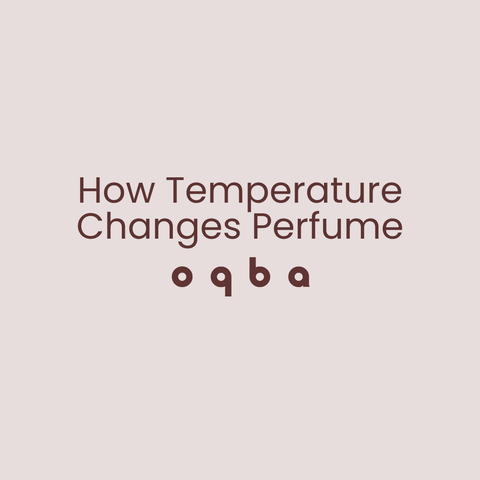Perfume is a dynamic chemistry system. Each note is made of molecules with different volatilities. When temperature rises, molecular motion increases, accelerating evaporation. Lower temperatures slow evaporation and alter diffusion.
- Top notes consist of light, volatile molecules. In heat, they evaporate very quickly, delivering a sharp opening but fading in minutes.
- Heart (middle) notes use medium‐volatility compounds. They emerge once top notes fade; in warm weather they can appear faster, sometimes flattening transitions.
- Base notes are composed of heavy, low‐volatility molecules (woods, resins, oud, musk). These linger longest and act as fixatives to stabilize the rest of the composition.
In very high ambient or skin temperature, perfumes evaporate faster across all layers, reducing longevity but increasing projection initially. Cold weather, conversely, slows diffusion and may render lighter notes imperceptible, though base notes remain detectable.
Humidity also plays a role: in humid environments, molecules disperse more slowly, sometimes boosting longevity, but sweat and moisture can distort scent.
Seasonal Switching in Practical Terms
To maintain optimal performance and user experience, perfumes should be matched to seasonal behavior of their notes.
Summer Strategy - Brighter, Lighter, Sharper
Because heat accelerates evaporation, use compositions where the top and heart notes are naturally light and refreshing. Let base notes act as anchors, not dominant themes. In Qatar’s summer heat (often above 40 °C), dense oriental or gourmand perfumes tend to feel heavy or “cloying.”
Global best sellers suited for heat:
- Dior Sauvage EDT - citrus + ambroxan balance
- Acqua di Gio (Armani) - marine & citrus freshness
- Light Blue (DG) - lemon, apple, cedar brightness
From Oqba’s lineup, choose:
- Wakra: built around bergamot, lemon, lavender - a coastal fresh profile
- Voyage: pineapple, apple, woods combination that keeps clarity
Winter Strategy — Depth, Warmth, Unfurling
Cooler temperatures slow evaporation and reduce projection. In winter, heavy notes gain presence rather than overpower. This allows leather, spices, oud, amber, woods to shine without becoming suffocating.
Global favorites that benefit from cold:
- Tom Ford Tobacco Vanille - warm spice + vanilla richness
- YSL La Nuit de L’Homme - cardamom, woods
- By the Fireplace (Maison Margiela) - smoky vanilla warmth
From Oqba’s catalog, ideal choices:
- Zekreet: hazelnut, leather, woody depth
- Dukhan: smoky-soapy top plus oud and tobacco to ground the scent
- Baraha: cinnamon, cypriol, vanilla - spice and sweetness balanced
Tips to Optimize Perfume Use Across Seasons
- Store perfumes in cool, dark places - heat and sunlight degrade delicate molecules.
- In summer, apply perfume on clothing, behind ears, or hair (less direct skin heat).
- In winter, use pulse points (neck, chest) where body heat helps projection.
- Layer with unscented or subtly scented moisturizers to retain volatility balance.
- Rotate seasonally rather than forcing one scent year-round - this boosts longevity and perception.




